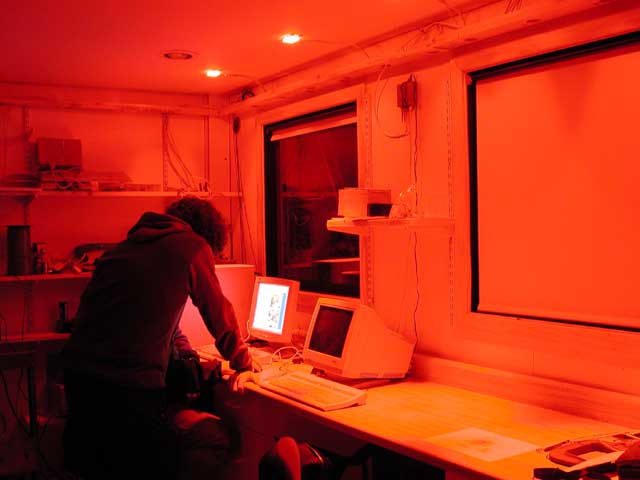Big Brother (I)
The observatory has a Big Brother (as in "...is watching you")!
Chip, Jason, and Alan, along with The Boss, spent a day rigging up
cute little NTSC weatherproof videocams (Marshall Co's "bullet" type),
and Chris Clearfield (a new recruit) built a few IR illuminator arrays
so we can see in the dark. Here's a daytime shot, the top two are the
B/W cams in the dome (looking south, and northwest), the color cam
looks east in the control room, and there's a camera looking to see
if it's snowing outside. The control room's windows have shades
drawn, but the window in the door lets light through, as does the gap
under the moving roof.
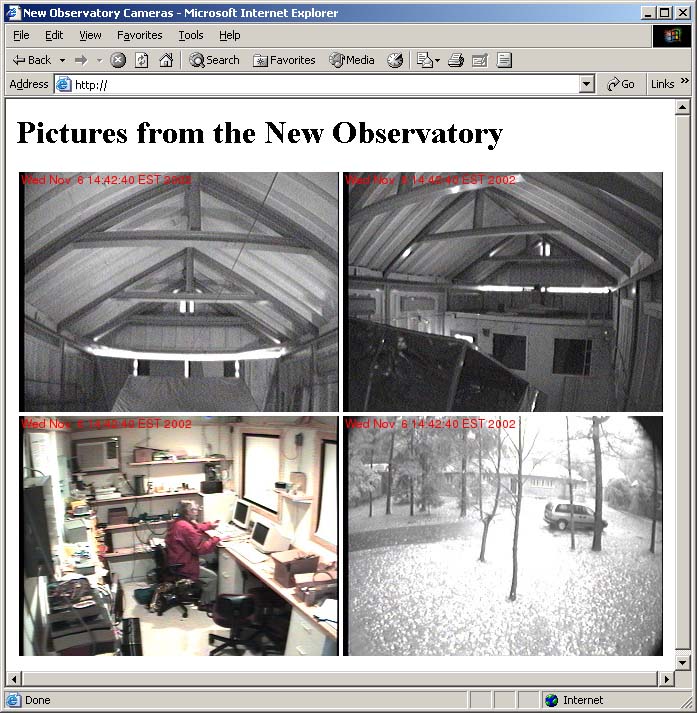
Big Brother (II)
Here's what you see at night -- this is actually the debut night's shot,
with the lower pair edited out (since they're just black and blue).
The IR illuminators emit 940nm light, in ample quantity to see what's
going on. We are going to add some light at the north end, over the
control room, so you can see better where the roof is. (Sharp-eyed
readers will note that the webcam url has been diplomatically edited
to convey minimal information.)
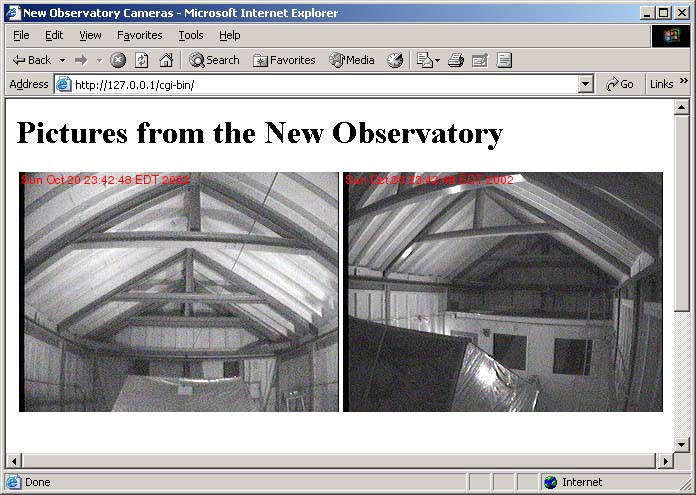
"Shulsky-Box-II": the PCB
We want to be able to turn stuff on and off remotely -- which means we
need a remote AC controller, under computer control. We built such a
thing for our earlier microwave searches, and called it a "ShulskyBox,"
named after the Shulsky Foundation in New York that sponsored some of
our work on BETA (billion-channel extraterrestrial assay). Here is the
21st-century incarnation --- "Shulsky-II" --- designed and built by
the trio of Clearfield, Horowitz, and Sreetharan. It's microcontroller
based, with 18 switched outlets, controllable both by computer and by
manual override switches on the front panel. Here's the PCB:
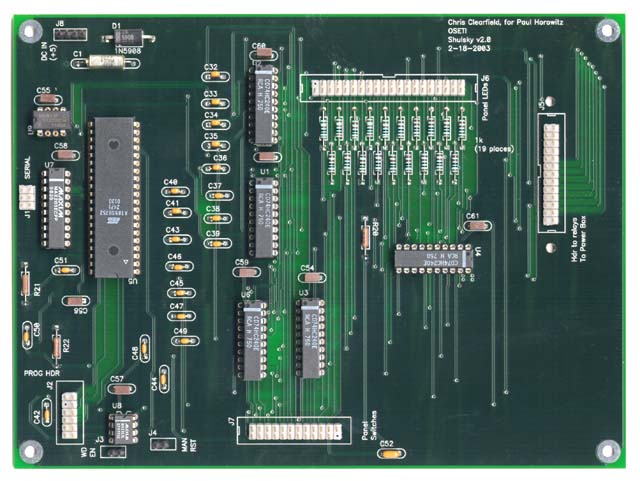
"Shulsky-Box-II": the controller box
And here it is, in its controller box:
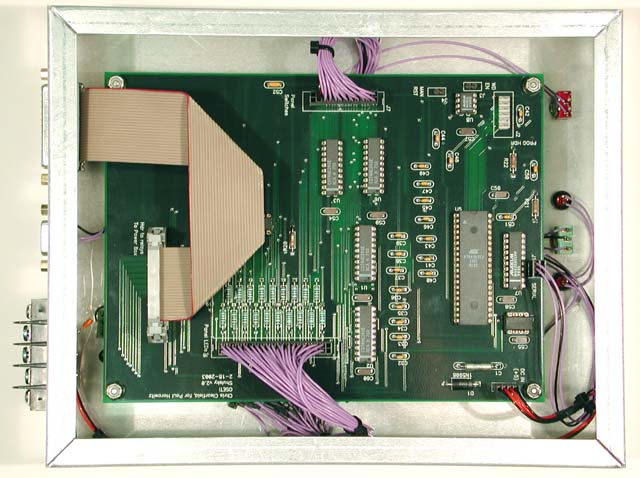
"Shulsky-Box-II": front view
Here's the front side of the controller box. The long vertical row of
center-off switches lets you turn any given outlet on or off, if you
have selected "manual" at the top. The LEDs to the left light green or
red accordingly. Plenty of room to put labels, like the ones shown.
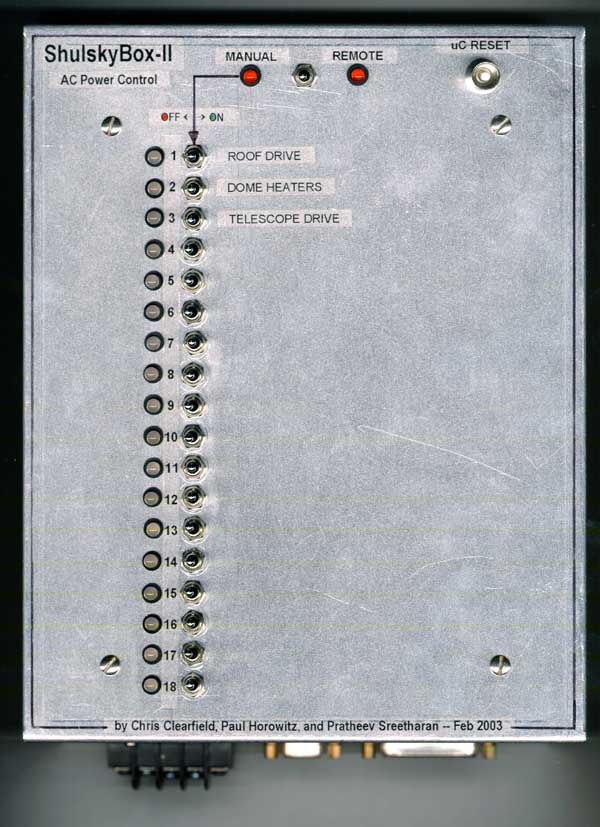
"Shulsky-Box-II": power panel (front)
Here's the front side of the "power box," which houses the 18 solid-
state relays (240V, 25A each), the 18 independently switched outlets,
a set of 9 breakers (2 outlets per breaker), a giant 3-phase breaker,
and an even gianter 3-phase line filter (30A/phase). The box is a
recovered DEC-VAX power box, courtesy Eli Heffron & Sons, with new
guts. The little 3AG-type fuseholder in the middle is a fake -- needed
something to plug the hole!
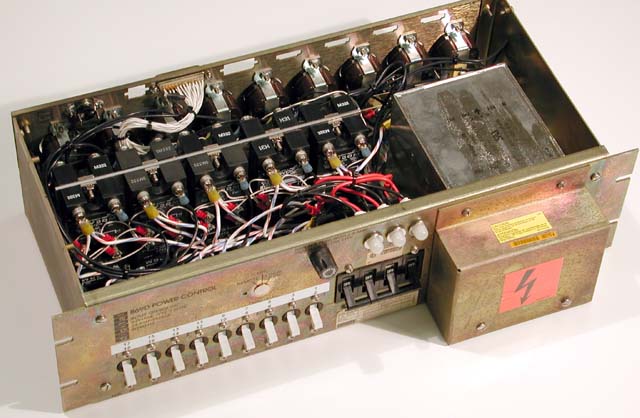
"Shulsky-Box-II": power panel (rear)
And here's the rear view, with the 18 switched outlets. You can see
the DB-25 connector through which the relay control signals arrive
from the wall-mounted controller box. The hard work on this mighty
brute was done by Chris Clearfield and Pratheev Sreetharan.
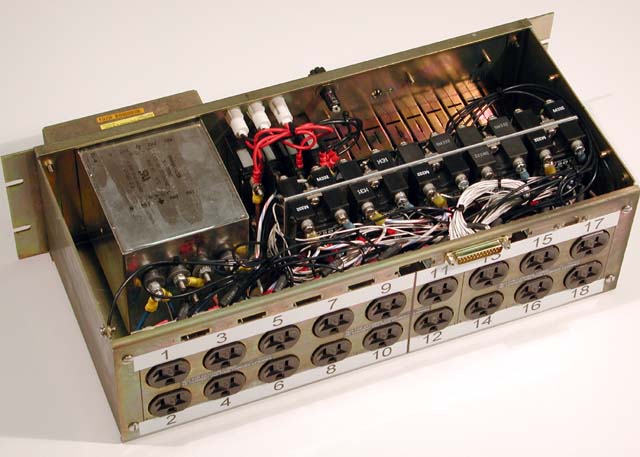
"Shulsky-Box-II": the circuit
For your circuit hacks out there, here's a schematic only a nerd could
love. Haven't debugged it yet, so caveat emptor. Sharp-eyed viewers
will note a pretty outrageous scheme to save port pins, namely forced
overdrive to change state, with code that replicates pin input to
corresponding output register.
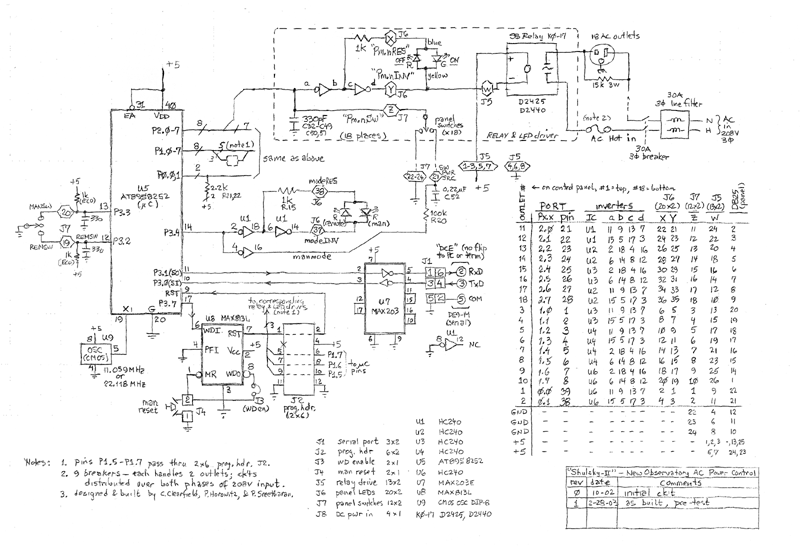
"Shulsky-Box-II": at home in its rack
We took the power box to the observatory, where we installed it in a short
rack (pilfered from the Gabrielse Group); there it lives along with a
1400 VA uninterruptible power supply, and a group of DC supplies.
(truth in advertising: not yet powered, stay tuned)
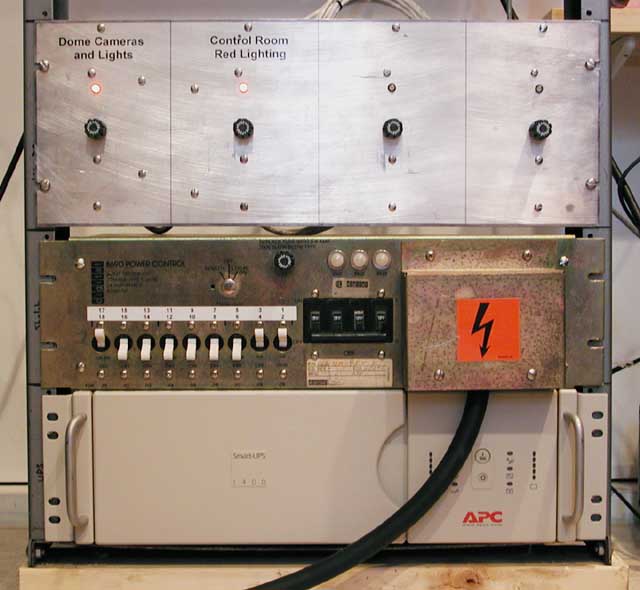
Red Illumnators - I
At night astronomers like red illumination, because it doesn't kill your
night vision. We installed 4 sets of 72 red LEDs on the ceiling, powered
from a commandable DC supply in the rack. Here's what it looks like in
daytime; that's David Sliski, who helped with the hard work, posing for
the camera.
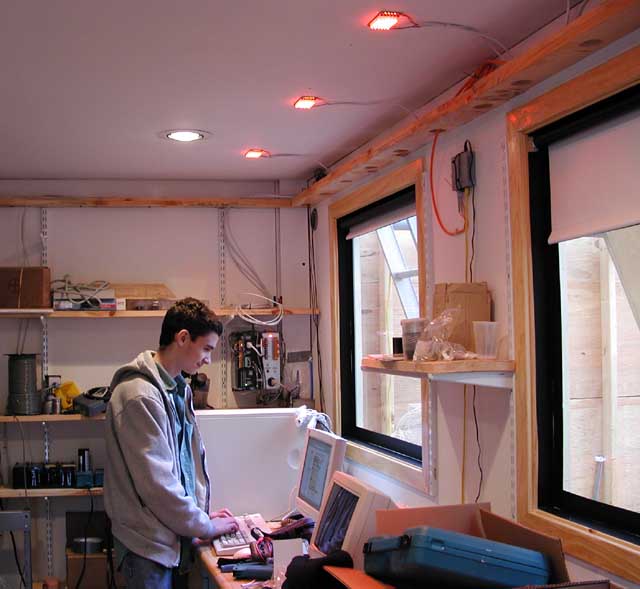
Red Illumnators - II
And here's the view with the lights out. Chris Clearfield got into this
shot, having worked hard along with 6 other folks on a beautiful Sunday
in March to outfit the control room.
